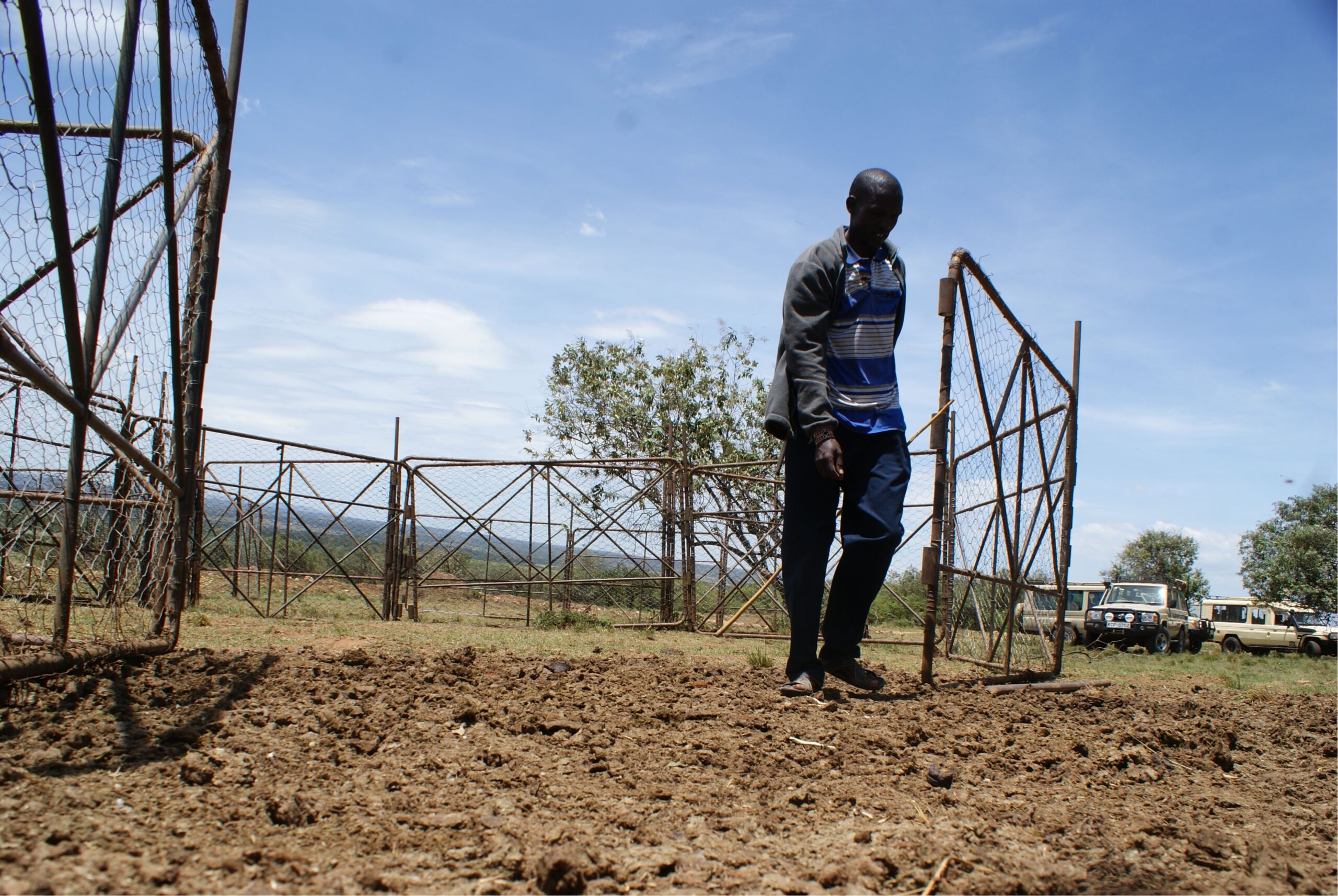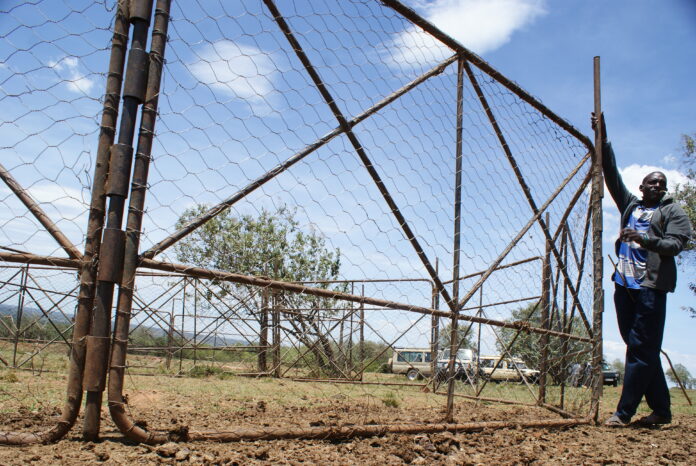By David Njagi
Narok County, Kenya: At an open space in Enoonkishu Conservancy, Southern Kenya, a wire meshed enclosure stood out among acres of grassland and acacia bushes.
Inside the shed, the drying floor was caked with different hoof-sized tracks, indicating that livestock had been resting here recently.
Bernard Leshinga threw open the only doorway into the paddock, as a group of curious journalists in tow prodded him with questions on what this piece of real estate was doing in the middle of the wilderness.
“It is a mobile boma (livestock shed). We use it to protect our livestock from predators at night,” said Leshinga as he brushed away swarms of houseflies from his face with a sweep of his hand.
The idea, said the pastoralist, is to move with the bomas, to the different sites where livestock would be grazing until pasture at that particular site has been depleted.
This saves herders the long journey back home during the evening to roost their livestock. It also saves them from confronting dangerous predators, a situation that has in the past escalated human-wildlife conflicts, he added.
“You see…even a lion cannot break into the boma because it is well protected by the metal fencing around it,” said Leshinga as he shoved his weight into the shed. It did not budge.
The tennis court-sized sheds also help in pasture management and recharge, according to Daniel Sayialel, the community liaison officer of the 4,000-acre big Enoonkishu Conservancy.
For instance, he said a boma may be placed at a site that has been degraded to tap livestock droppings.
These mix naturally with the soil, while the livestock’s hoof prints make small openings on the surface, which help flood waters to seep into the ground.
Recharged by rainfall, the site then forms its own life bubbles, which seed the grass into fresh pasture.
While a mobile boma can hold over 200 cattle in a single shed, it remains at one site for about four days before the herders move it to another.
“We have less shortage of pasture even during the dry spell because this innovation widens the grazing range from the traditionally restricted herding sites,” said Sayialel.
Mobile Bomas are a growing number of smart inventions that are boosting conservation in the Mara ecosystem because it opens up land for both wildlife and livestock to graze together.
For instance, the free-range system has encouraged wildlife that had deserted Enoonkishu due to lack of pasture to return, said Sayialel.
This has boosted local tourism and created over 2,000 jobs, while the monetary value communities are getting from conservation has discouraged them from selling their land to developers.

“Community conservation is a system that can restore disappearing wildlife migration corridors in the Mara because it discourages dividing and fencing of land,” said Nicholas Oguge, a researcher at the University of Nairobi.
There are five wildlife migration corridors in the Mara landscape, according to the environmental policy and director at the Centre for Advanced Studies in Environmental Law and Policy (CASELAP), at the University of Nairobi.
These include the Mara-Serengeti, Mara-Loita, the greater Amboseli, the Manyara-Tarangire, and Nairobi National Park-Kaputiei migration corridors.
Four of them are almost extinct, while in some regions like Loita plains in southern Kenya, the entire wildlife migration corridor has disappeared, he said.
A study investigating the economic value of East Africa’s natural assets estimated the value of Kenya’s Mara ecosystem to communities to be about US$ 6.5 billion annually. But this could all be lost by 2050.
Leshinga’s understanding of this value is within the scope of getting enough grass for his livestock and earning some money from the estimated US$ 7.5 million annual tourism revenue that conservation has attracted.
But the Maasai Mara Wildlife Conservancies Association (MMWCA) has set sights on trading the recharged rangelands in the carbon markets and has tipped groups of this coming windfall.
Sayialel, whose group of 32 members is also a member of MMWCA said conservation innovations have managed to recover 98% of the lost vegetation, and according to him, the system has already begun capturing carbon from the atmosphere and storing it safely.
His group has not signed any contract yet, but they expect the carbon project to be a big earner because MMWCA has already approached buyers and experts to evaluate the Mara carbon potential.
“We are trying to find as many ways as possible to increase benefits for the landowners here. We have been told carbon trading is a good idea and has benefits. If it works, it will boost conservation efforts within communities,” said Sayialel.
This story was supported by the Earth Journalism Network project on conservation and wildlife in East Africa.














